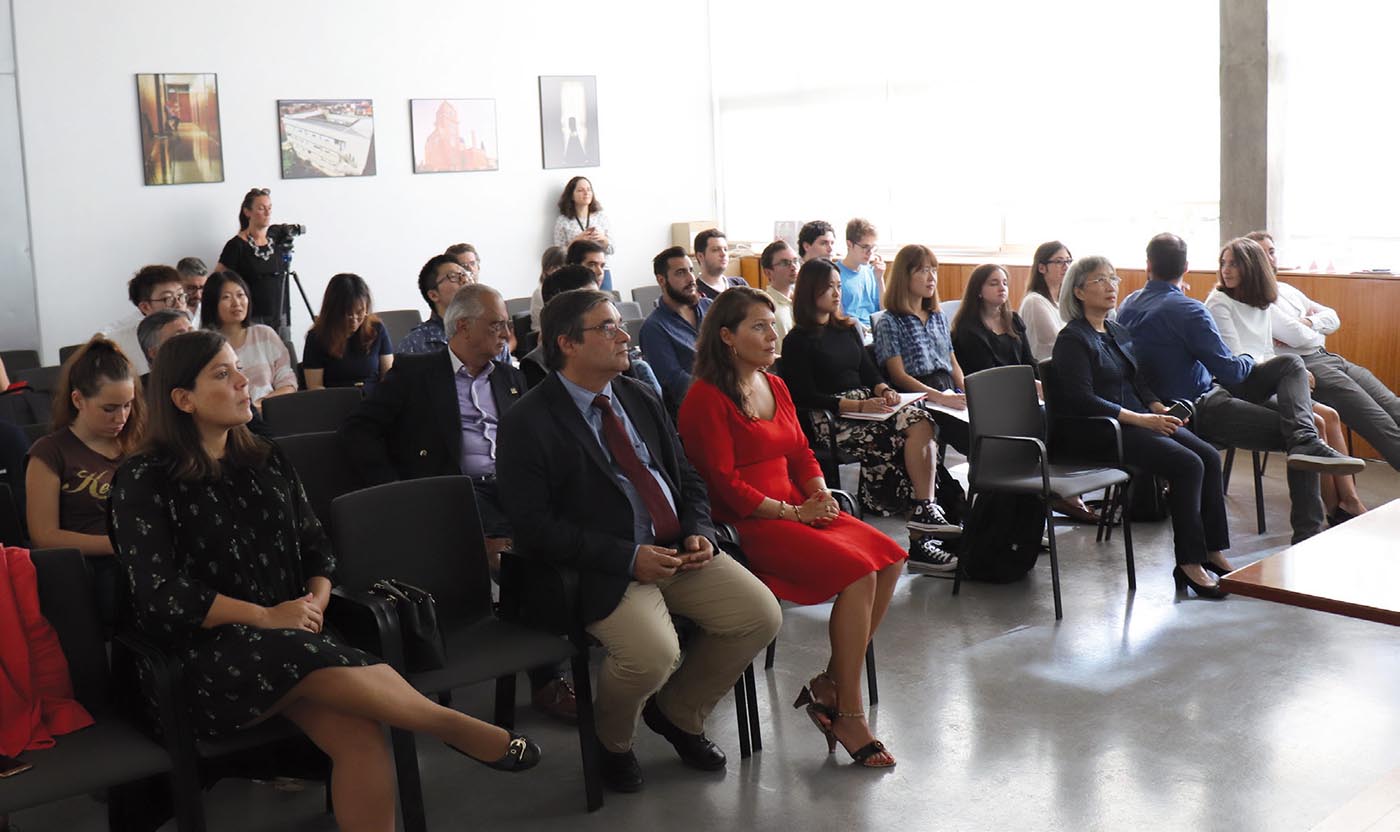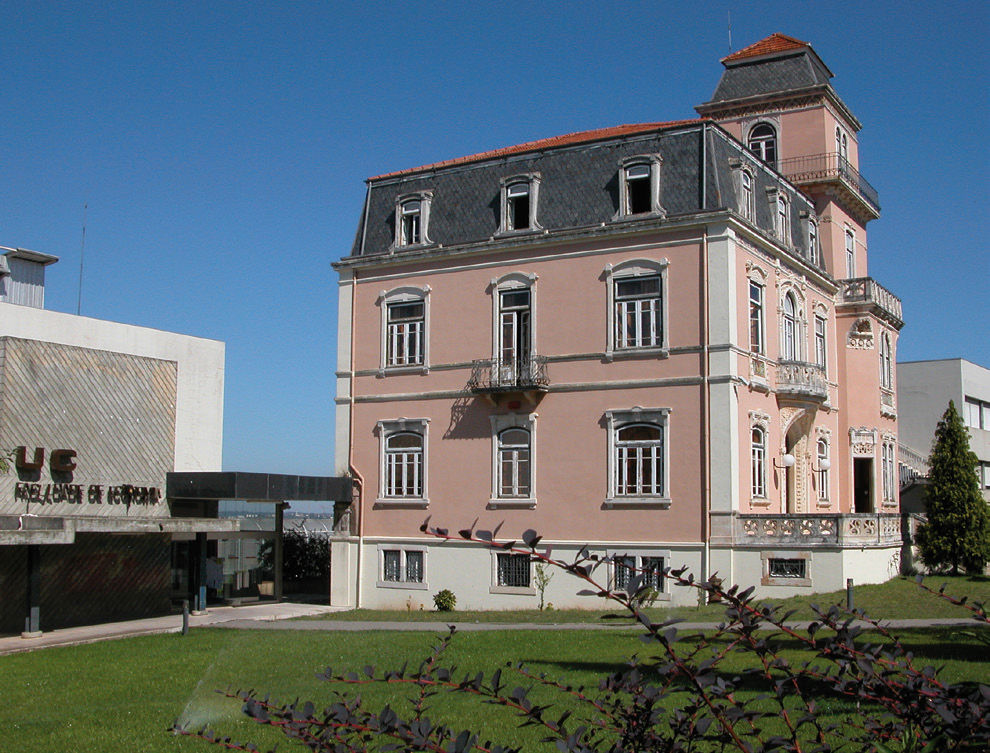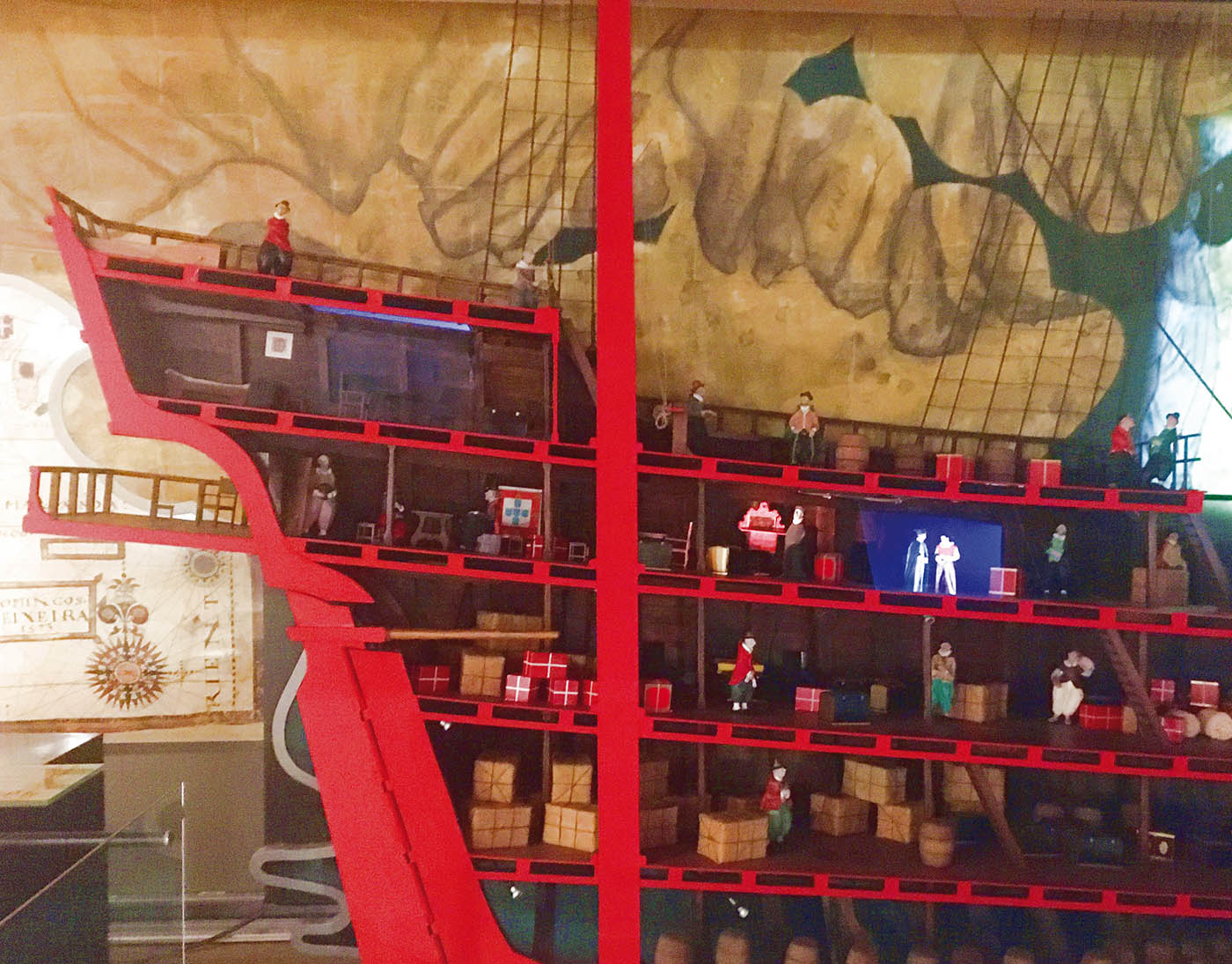New directions in Chinese Studies in Portugal
Since its inauguration in 1999, the Macau Scientific and Cultural Centre (in Portuguese, Centro Científico e Cultural de Macau, which can be abbreviated to CCCM) has become recognized world-wide as an important focal point for research on Portuguese interactions with China since the sixteenth century. The CCCM is unique since in its premises it includes a richly-stocked museum, and also possesses the largest library in Portugal of research literature on China, along with a collection of rare and valuable manuscripts and archival documents.
Unique and extensive library collections
About the library, all that I will mention here is that it contains, in addition to a very large collection of relevant literature, an audiovisual collection of about forty thousand slides and five thousand photographs, and a unique collection consisting of about seven thousand microfilms containing more than fifty thousand documents, including the collection from the Holy House of Mercy of Macau, restricted books from the Historical Archives of Macau, the Parish Archives of Macau, and the Archives of the Municipal Council of Macau. This large collection includes essential documents for the study of Macau and its institutions, covering a time range from the beginning of the seventeenth century to the middle of the twentieth century. Helena Dias Coelho, who has been present from the very first beginning of the Macau Centre and is the ‘guardian’ of the Library’s funds, will be engaged on securing their digital version for years to come.
Richly-stocked museum
Research carried out at the CCCM in the first twenty years of its existence centred to a great extent on contacts between Portugal and China during the Early Modern Period or, in Chinese terms, the Ming and Qing dynasties. In the Museum, which is currently headed by Rui Abreu Dantas, the section of exhibits titled ‘The Port City’ reveals how the network of interests and relations between groups of Portuguese and Chinese residing there created the need for and the possibility of a city of services between Europe and Asia, and between East Asia, and Indian and Atlantic oceans. Another section titled ‘The Order of Transfers’ displays some of the ecological and technological exchanges that made Macau a pole of dynamism in East Asia and Europe. New foodstuffs, new instruments, and even new ways of taking measurements entered China, and also travelled to Europe, through Macau, which has been, since its origin, one of the central points for continual openness and communication between East Asia and Europe, and the rest of the world. A third section titled ‘Christianism and Culture’ emphasizes the role of Macau as a place of religious plurality, with its Chinese syncretism of popular religiosity, Buddhism, Taoism and Confucianism, accompanied by Christianism, and highlights the role of St. Paul’s College, the first European university college in East Asia.

Opening Session of the 2019/2020 edition of the advanced course ‘China and the Portuguese-speaking Countries in World Trade’ on Oct 11, 2019. Property of the course.
In the Museum’s Chinese Art Collection, which spans a period of more than five thousand years, exhibits include a wide range of artefacts from Neolithic ceramics to nineteenth century ivories. The Collection includes terracotta, bronzes, stoneware, and various types of porcelain, such as blue and white, green family, pink family, emblazoned and monogrammed, as well as pieces of religious symbolic importance. Additionally, The Collection features Shek Wan ceramics, an important and significant collection of objects used to smoke opium, objects that were part of the China Trade, such as lacquers, paintings from Chinese and European schools that highlight views of the Praia Grande Bay, fans, silverware, costumes, and a significant collection of Chinese coins. Examples of special public exhibitions that have been organized in the Museum are Ceramics of Timor Loro Sae, which was attended by the President of Timor, Xanana Gusmão; Macau: An International Port; Tomás Pereira (1646-1708): A Jesuit in Kangxi´s China; Bronzes and Jades from Ancient China, featuring treasures from the José de Guimarães collection; and Peace and Serenity: Song Ceramics from the Qing Jing Tang Collection, curated by Robert D. Mowry, emeritus curator of Chinese Art of Harvard Art Museums.
Research at CCCM
Two major projects have been initiated at the CCCM, bringing together a large number of specialists, since 2006. One project is centred on the life and works of Tomás Pereira (1646-1708), a Portuguese missionary who resided in Beijing for thirty-six years from 1673 until his death. Pereira achieved renown as a cultural mediator between Portugal and China, as a consequence of his proximity to the Kangxi Emperor (r. 1661-1722). Serving as a political and diplomatic advisor to the emperor, Pereira had a decisive role in the signing of the Treaty of Nerchinsk between China and Russia (1689). While residing in the capital, Pereira served as Acting President of the Astronomical Bureau, and was himself an expert craftsman, possessing competence in mechanics and European techniques for designing and constructing clocks, musical instruments and automata. Pereira also taught European music to the emperor, and these lessons came to play a crucial role in Pereira's relationship with the Kangxi Emperor. The project on Pereira was completed in 2011 with the publication of two volumes, amounting to more than a thousand pages, comprising biographical documents, one hundred and fifty-one letters, and a dozen reports and treaties. This project, carried out in cooperation with the Centre for Classical Studies of the University of Lisbon, also resulted in the organization of two international colloquia in 2008, one in Lisbon at the Centre, and the other in Beijing. The latter gathering was in cooperation with the Center for Mathematics and Fundamental Applications of the University of Lisbon and the Institute of History of Natural Sciences of the Chinese Academy of Sciences.
A few years after the completion of this major work, another research project was initiated on one of the central figures in the field of relations between Portugal and Ming Dynasty China, namely Álvaro Semedo (1585-1658). He too was a Portuguese missionary with a lengthy experience of living in China, from 1613, with brief interruptions, until his death. Semedo possessed profound knowledge of the Chinese language and Chinese culture. Among his extensive body of works, a book he published in 1642, in the Spanish language, titled Imperio de la China i Cultura Evangélica en él, quickly became a bestseller in seventeenth century Europe. This large-scale project is still underway, and at the CCCM, Dr Isabel Pina is currently engaged in writing a major monograph on Semedo and his works, dealing with issues such as his seminal contribution to the long process of constituting and circulating knowledge in Europe about the Chinese empire. Her colleague, Dr Ana Cristina Alves, who is currently working on developing the Museum holdings, is herself a specialist in the history of Chinese philosophy, culture and religion, and resided for several decades in Macau. In addition to research with specific connections to Portugal and to Macau, the CCCM has been the venue for a number of international conferences, including a conference concerning Mazu, the goddess of the sea, reputed to have lived during the tenth century; another on Chinese Musical Instruments, and a third titled Eurasia: Trade and Finance (1300-2000).
New director, new direction
On 17 February 2020, I was appointed to the position of President of the CCCM, and was charged by the Minister of Science, Technology and Higher Education, Manuel Heitor, with developing a strategic plan for the period 2020-2030 for the CCCM. In the MoU between the Ministry of Science, Technology, and Higher Education of Portugal, and the Ministry of Science and Technology of the People’s Republic of China, it is stated that co-operation on cultural heritage, history of science and technology, and emerging contemporary interactions, may include, but is not restricted to, the development of a new R&D agenda and advanced training programs aiming to promote the history of science and emerging Europe-Asian scientific and cultural relations. These may include the analysis of the evolution of the ‘silk route’, from its origins to the prospective discussion of new horizons, as well as the promotion of the collaboration of China and Chinese institutions with the ‘Macau Scientific and Cultural Centre, CCCM’, located in Lisbon, together with the promotion of a new R&D alliance for the development of the history of science and technology, and emerging contemporary interactions between Europe and Asia.

Faculty of Economics of the University of Coimbra. © Faculty of Economics of the University of Coimbra.
Where the CCCM has previously tended to maintain an evident focus on historical issues, the significant resources at its disposal permitted me to take a new direction, and view the CCCM as simultaneously a forum for research and education on historical encounters, and also as a forum for research and education concerning ongoing and future relations between Portugal and China, giving a special place to Macau, and also between Europe and Asia. Through engaging in a dialogue with colleagues, and facilitated by networks that, as a specialist in Contemporary International Relations with tenure at Coimbra University, I have been able to develop in Portugal, for example the Observatory of China, and actively participated in abroad, such as the European Association for Chinese Studies (EACS), EastAsiaNet, and the European Alliance for Asian Studies, I understood that the path previously followed by the CCCM could be expanded, and diversified. I developed my ideas from experiences gained organizing and teaching the course ‘China and the Portuguese-speaking Countries in World Trade’, and other similar initiatives related to China, that I organized at the Faculty of Economics at the University of Coimbra. The University of Coimbra is a longstanding official member of the European Alliance for Asian Studies and my experiences should be viewed as having taken place under the umbrella of the Alliance.
The CCCM Archive Network
To be able to advance in its assigned role as a national centre for research and education, the CCCM should engage in a range of activities, implemented both within and outside of the premises of the CCCM, in close collaboration with colleagues in Portugal and abroad, working in a range of academic fields. At the same time, recognizing the importance of new technologies for historical research, I realized the importance of networking for enhanced usage of the wealth of archival materials regarding Macau and historical contacts between Portugal and China that exist not only in libraries in Portugal, but all over Europe, in China, and indeed world-wide.
With this thought in mind, and in conversation with colleagues in Portugal and abroad, I designed a new project, the CCCM Archive Network, with the aim of making available as wide a range of historical materials as possible for researchers interested in historical contacts between Portugal and China, and thereafter Portugal and other countries in Asia. This project will commence later this year, and aims to produce results within twelve months. The plan is first to focus on holdings located in Lisbon, such as the Ajuda Library, the Overseas Historical Archive, and the Archives for Diplomatic History, the António Alçada Baptista Documentation Centre of the Orient Foundation, and the Documentation Centre of the Instituto do Oriente. The next step will be to construct a digital reference resource, to be placed on the server of the CCCM in Lisbon, that will be made publicly available. After this first stage is completed, the project will enlarge its scope to the national level, with the aim of identifying and establishing cooperation with national archives, libraries and documentation centres situated outside the capital, throughout Portugal. The third and concluding phase of the project will be identifying and establishing cooperation with international archives, libraries and documentation centres world-wide, for example in Europe, China, Japan, and the USA.
An increased understanding of our globalized society
At the same time, work on reinvigorating the Museum is underway, including the design and publication of a new catalogue, the creation of new multimedia shows, the organization of temporary exhibitions, the creation of a virtual digital Museum and the integration of the Museum in the Portuguese Museum Network, all of which will allow the creation of new understandings of contacts between Portugal and China over the centuries, and new thematic itineraries. The dissemination strategy of the Museum and its collection will involve greater participation from the League of Friends of the Museum, and will include the promotion of joint activities. A reason for the urgent necessity of bringing the Museum, and the access to important historical and archival sources, into the digital age is to counteract a continuing lack of knowledge in Portuguese society about Chinese strategic culture, which prevents any informed reaction to its approach towards Europe. This task is especially important, considering that the promotion of scientific knowledge about Asia is a responsibility that the CCCM cannot knowingly leave in the hands of third parties.

Black Ship Model at the Museum of the Macau Scientific and Cultural Centre. © Macau Scientific and Cultural Centre.
Through offering non-degree courses taught on the premises of the CCCM, as a complement to the undergraduate, master's and doctoral programs that cover Asian Studies at Portuguese universities, the CCCM will contribute to an increased understanding of the globalized society in which we live. The offer of training programs, e.g., summer and winter schools for doctoral students, and short intensive courses, will enable an increased diffusion of scientific knowledge and allow professionals from a variety of sectors in the Portuguese economy to inform themselves on central issues in the global economy.
The special status of the CCCM as a producer and disseminator of knowledge about Macau and its contribution to Sino-Portuguese relations means that its main focus will be Macau and China. Regarding Portugal’s relations with other Asian countries, some resources will be allocated to welcome proposed initiatives and to identify opportunities that contribute to highlighting the dynamism of the CCCM, and increasing its visibility. Particular emphasis will be given to large countries such as Japan, Korea and India, but attention will also be paid to Malaysia, considering the special attention that is paid to Malacca in Macau, and also to Singapore, viewed in Macau as the leading exponent of the concept of ‘Asian modernity’, as well as to South-East Asian countries such as Thailand, Indonesia and Timor.
In cooperation with partners world-wide
In conclusion, in line with the mission statement for the CCCM, over the coming ten years (2020-2030), under my leadership, and in cooperation with partners in Portugal and world-wide, the CCCM will endeavour to become an international reference centre for Asian and intercultural studies, and for scientific activities that lead to cooperation between Europe and Asia. The CCCM will develop international networks and promote aspects of the scientific and technological cooperation framework of the China-Portugal Science and Technology Partnership 2030, while restructuring and modernizing the facilities of the CCCM, making it a pole of attraction for researchers, students and the general public, while articulating and acting as a custodian of the three fundamental functions of the CCCM, namely research, documentation, and museology.
Carmen Amado Mendes, President of the Macau Scientific and Cultural Centre https://www.cccm.gov.pt/en